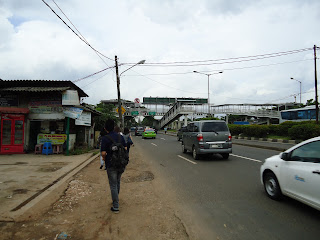Bike Build - Hidden Cable Routing
I am going to build a full hidden cable routing bike next month. Ordered online, no name brand a week ago, along with all the components from aliexpress.
Personally, i don't care about aero gains that much. Good to haves.
But.
They just look aesthetically better.
Which is great. I am willing to sacrifice my time tinkering for the aesthetic of it.
Anyway, from the user perspective as home mechanics. It is a pain in the ass. But, they are getting better imho. Standards is starting to surface with fully hidden cables.
The standard for the hidden cable is bigger top tube. Most comes with 52mm, mine comes with 47 top, 49 bottom bearing.
The fork design is slightly compromised, having it not perfect cylinder, but with flat face. I'm guessing it's to give a clearance for cable without making the top tube having to accommodate 52mm bearings.
Currently, the component manufacturers who supports hidden cable routing:
Token - Cable Box
FSA - Arodynamic Cable Routing (ACR)
DEDA - Deda Internal Cable Routing (DCR)
Most of their designs comes with 52mm bearing. Token headset however, have a 44mm EC headset. They are trying to accommodate 44mm tob tube with 52mm bearing. Good effort imho. Which means more current standard frame is being accommodated.
The problem with bike industry right now is that they don't have a uniform standard.
Too many proprietary dimensions.
I guess as any other industry, the designers are avoiding patents while figuring out which design can be used as "standard" solution.
Proprietary designs is good for full integration, but is worrying when it comes to spare parts and interchangeability.
Standardized designs is the other way around. In reality there are no designs that is on the extremes.
Would love to document building my no name bike in the future.



Comments
Post a Comment